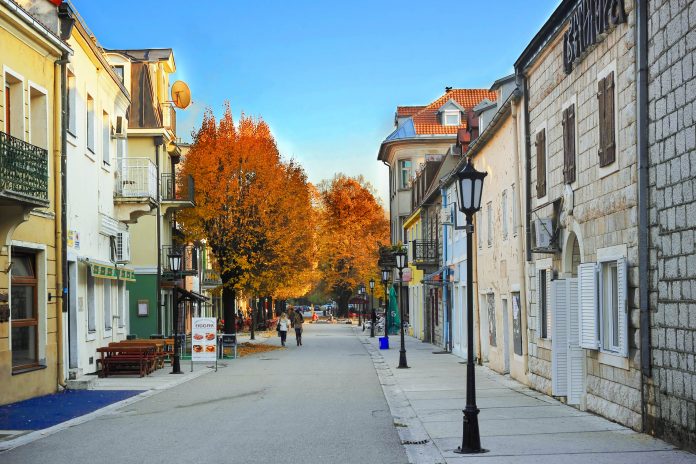Einst königliche Hauptstadt Montenegros ist Cetinje immer noch das kulturelle Zentrum des Landes. Mit seinen prachtvollen Renaissancepalästen, zahlreichen Botschaften und international anerkannten Museen ist es in jedem Fall einen Besuch wert.
Das königliche Cetinje wird oft als die Kulturhauptstadt Montenegros bezeichnet und hat eine bedeutende Geschichte hinter sich. Am Fuß des Lovćen gelegen war Cetinje einst Heimatstadt der berühmten Fürstenfamilie Petrović, die gemeinsam mit europäischen Diplomaten und anderen Herrschern der Stadt ihren royalen Flair verliehen. Heute ist sie gemeinsam mit Podgorica die Hauptstadt Montenegros und offizieller Sitz des montenegrinischen Präsidenten.
Inhaltsverzeichnis
Wie kommt man nach Cetinje?
Die Anreise nach Cetinje erfolgt am besten von Budva oder Podgorica aus mit dem Bus bzw. Auto. Auch von Kotor aus gibt es eine Straße, die jedoch sehr steil und kurvig ist, dafür mit prachtvollen Ausblicken über die Bucht von Kotor belohnt.
Sehenswürdigkeiten von Cetinje
Mausoleum von Danilos I. Petrović
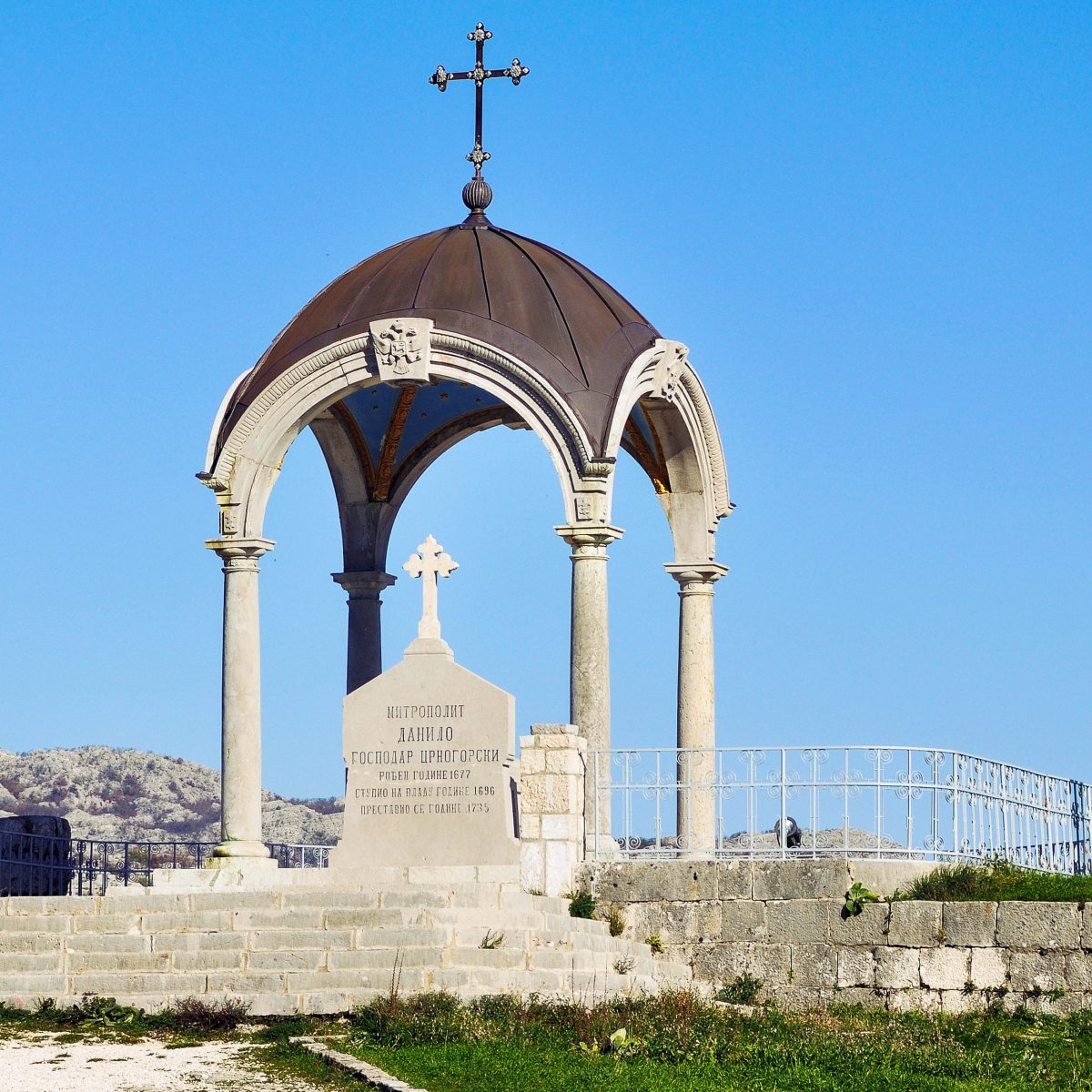
Das Mausoleum des Begründers der Petrović-Dynastie wurde von Prinzessin Jelena, einer der Töchter von Nikolas I., im frühen 19. Jahrhundert errichtet.
Die kleine Kuppel, die den Sarg bewacht, thront auf dem Orlov Krš, dem „Adlerfelsen“, und bietet einen hervorragenden Blick über Cetinje, der nach nicht einmal einer Viertelstunde Aufstieg genossen werden kann.
Für einen Besuch des Mausoleums von Petar II. Petrović selbst, muss man sich übrigens auf den Lovćen begeben, wo sein Grabtempel in atemberaubender Höhenlage thront.
Kloster Cetinje
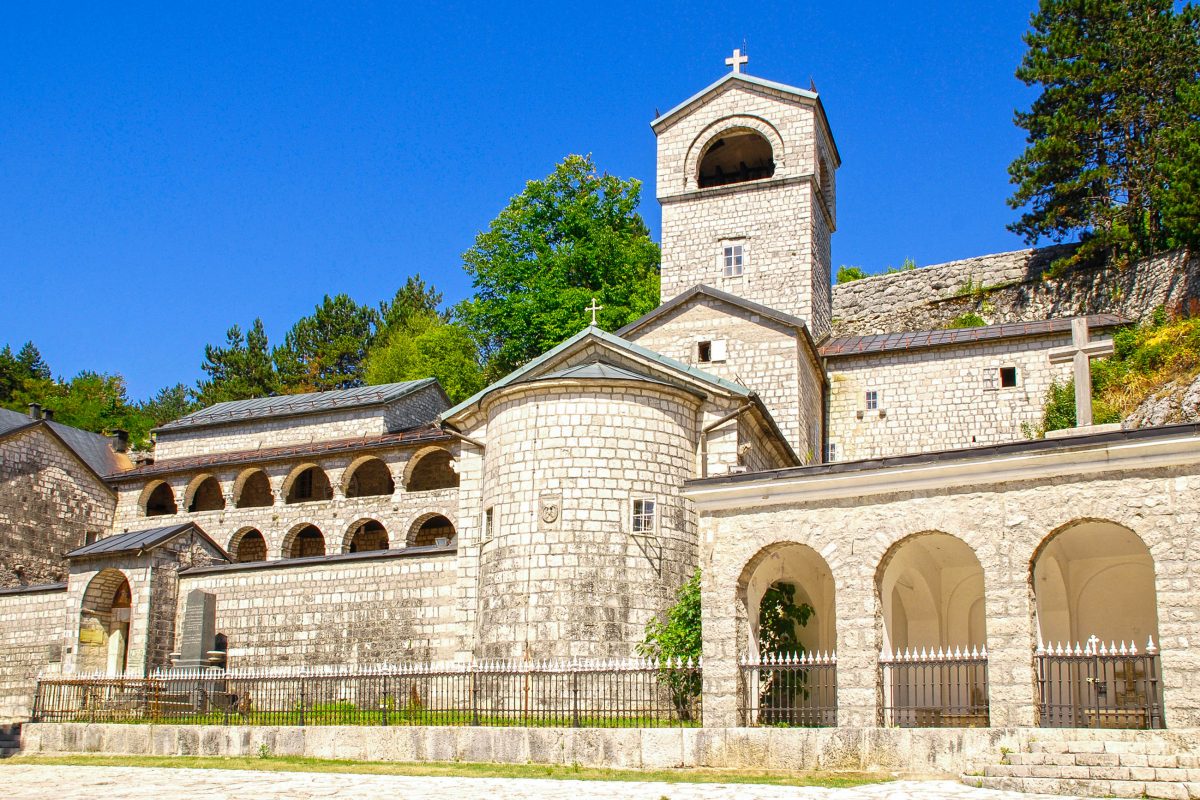
Das nächste Highlight von Cetinje folgt gleich direkt unter dem Adlerfelsen mit dem eindrucksvollen Kloster von Cetinje, seit 1430 das spirituelle Zentrum Montenegros. Das dem orthodoxen Heiligen Sveti Petar geweihte Kloster heißt auch Manastir Sv. Petar und bewahrt den Brustkorb des Heiligen als Reliquie im Kirchenschiff.
Außerdem beherbergt das Kloster die Hand von Johannes, dem Täufer, einen Splitter des Kreuzes Christi und eine wertvolle Bibliothek, in der historische Drucke aufbewahrt sind, die im 15. Jahrhundert in Cetinje angefertigt wurden.
Vom Innenhof zweigen noch ein kleiner Gebetsraum, ein Souvenirshop und eine öffentliche Toilette ab, der Rest des Klosters ist für Besucher nicht zugänglich. Jeden Samstagabend wird der kreisrunde Dreschplatz vor dem Kloster, der übrigens genauso groß ist wie die Zarenglocke im Moskauer Kreml, für den Sonntagsbesuch der Kirche traditionell gesäubert.
Vladin Dom – Geschichts- und Kunstmuseum
Nicht weit östlich des Klosters befindet sich das größte Gebäude von Cetinje, das auch gleichzeitig der erste Stahlbeton-Bau Montenegros ist. Der Vladin-Dom wurde 1910 zur Krönung von Nikolas eingeweiht und beherbergte die Nationalversammlung und die Staatsverwaltung. Heute sind darin das Geschichts- und Kunstmuseum von Cetinje zu finden.
Neben nationalen und internationalen Werken von Picasso und Chagall ist seit 1952 in der Blauen Kapelle die „Madonna von Philermos“, Ikone des Schutzheiligen des Malteserordens, ausgestellt. Das von den Kreuzrittern aus Jerusalem gerettete Prunkstück kam hier nach einer Odyssee durch europäische Städte endlich zur Ruhe.
Biljarda – Njegoš-Museum
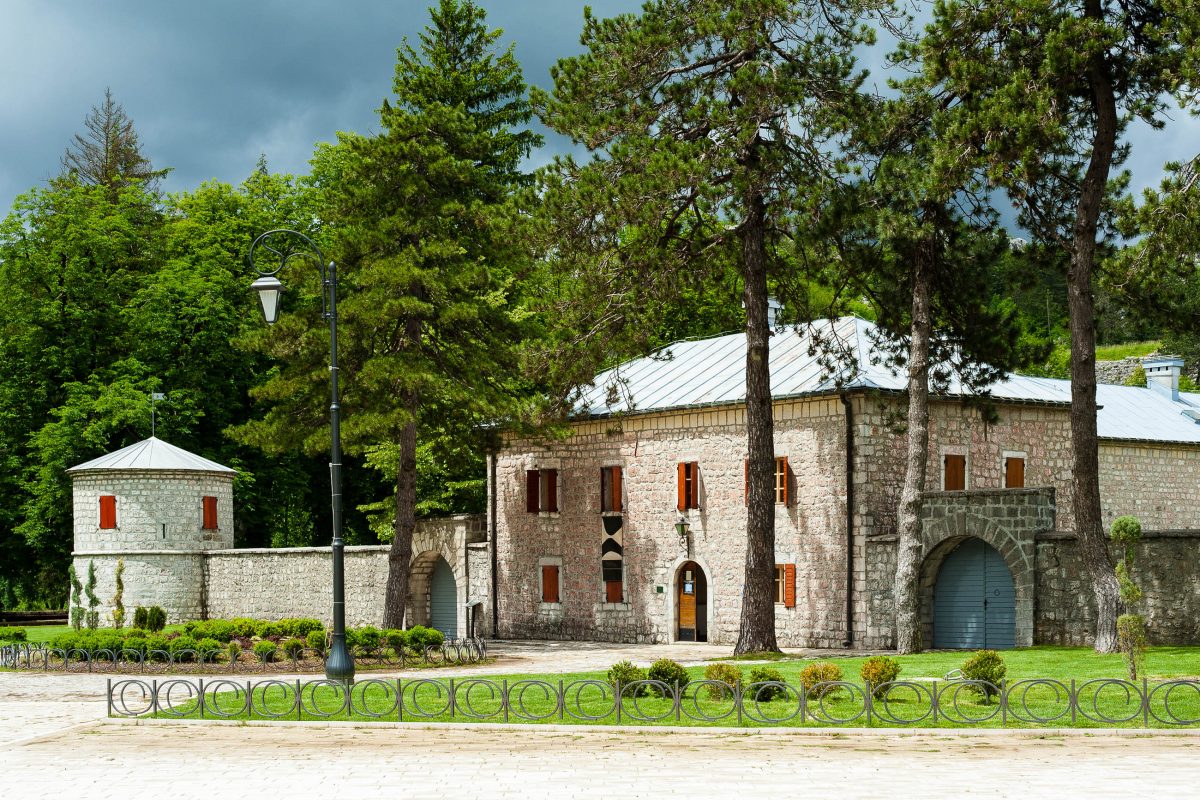
Gegenüber dem Kloster von Cetinje versteckt sich hinter dicken Mauern und wuchtigen Türmen die Biljarda. Der festungsähnliche Bau wurde im Jahr 1838 als Sitz von Petar II. nach russischen Plänen errichtet. Auch die Finanzierung wurde von St. Petersburg übernommen. Seinen Namen erhielt die 70m lange Residenz von Petars Liebe zum Billardspiel.
Bis 1867 wohnte die Fürsten-Familie in den 25 Zimmern, die daneben auch als Verwaltungs-Räumlichkeiten dienten, danach zog sie in den neuen Palast um.
Auch heute ist die Biljarda noch dem Leben der Petrovićs gewidmet. Im Njegoš-Museum ist sogar noch der berühmte Billardtisch zu sehen, den Petar II. eigens über die steilen Pfade von Kotor importieren ließ. Ein weiteres Highlight ist die detailgetreue Reliefkarte Montenegros, die sogar die Nachbildung einiger montenegrinischer Sehenswürdigkeiten enthält.
Crkva Rođena Bogorodice
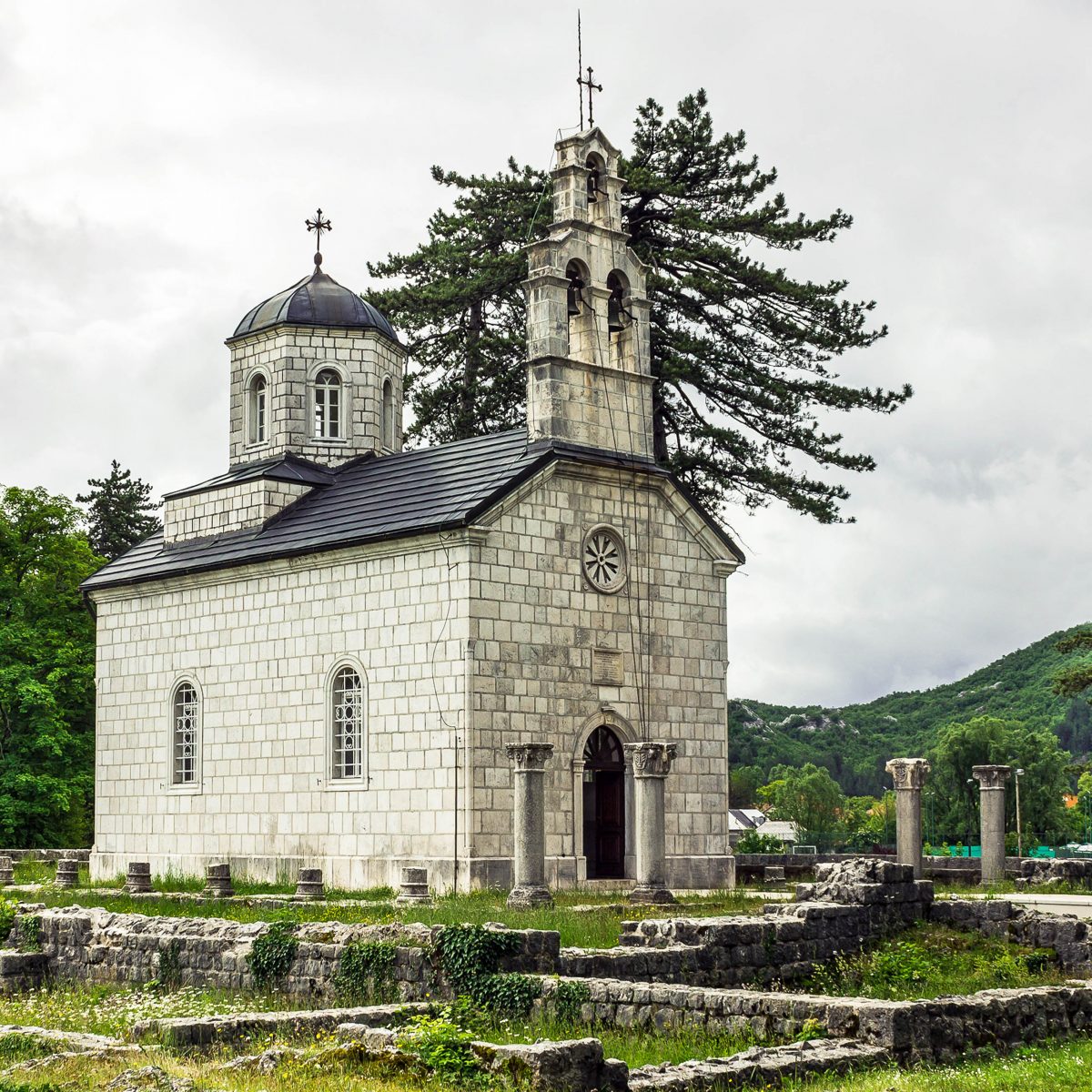
Am Trg Kralja Nikola, der Biljarda schräg gegenüber, steht die serbisch-orthodoxe Kirche der jungfräulichen Geburt. Die erst 1890 errichtete Kirche behütet den ewigen Schlaf von Cetinjes berühmten Persönlichkeiten.
König Nikola I., seine Frau Milena und der Stadtgründer Ivan Crnojević sind hier bestattet.
Hier soll außerdem die berühmte erste Druckerei Europas gestanden haben, die seit 1485 in Betrieb gewesen sein und die kyrillische Schrift verbreitet haben soll.
Ddvor Kralja Nikola – Nationalmuseum von Montenegro
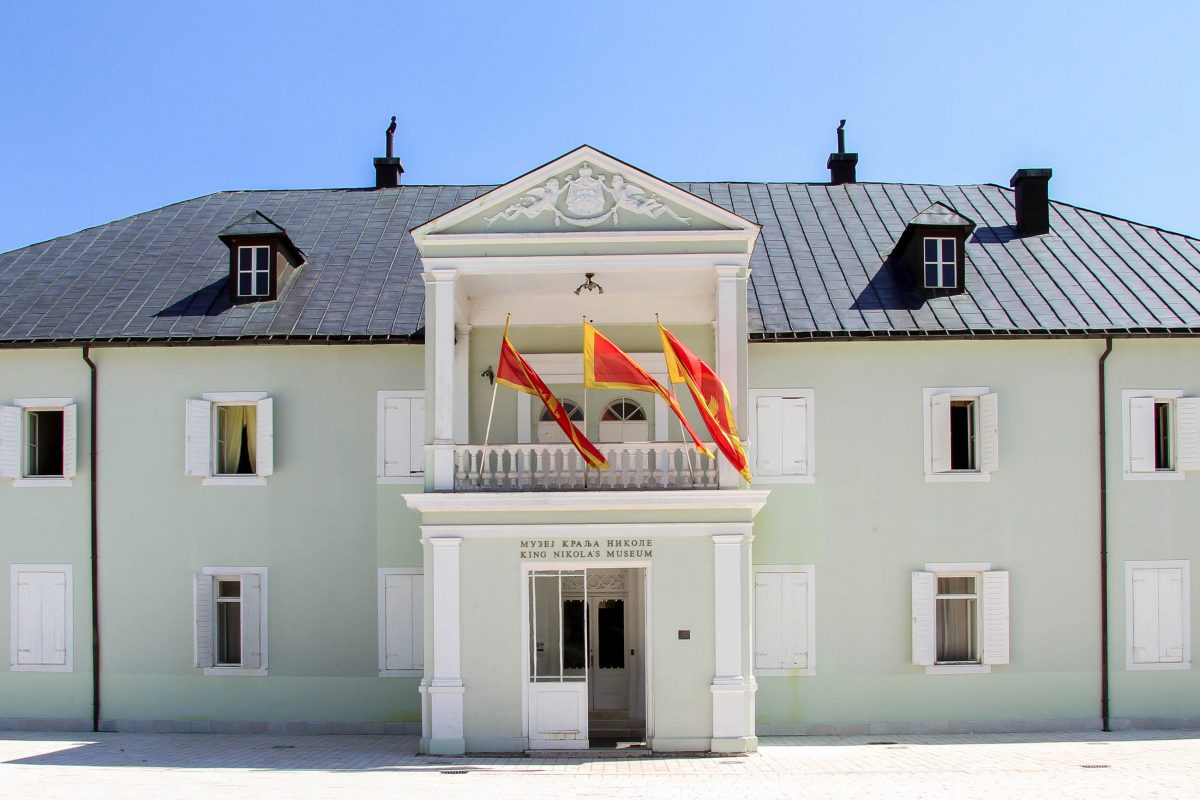
Hauptbauwerk am Trg Kralja Nikolav ist allerdings der Ddvor Kralja Nikola, der Palast des König Nikolas. Ab 1867 residierte hier die königliche Familie. Heute befindet sich in den geschmackvoll eingerichteten Räumen hinter der bescheidenen Fassade das Nationalmuseum von Montenegro.
Tipp: In jedem Museum kann eine Sammel-Eintrittskarte erworben werden, die Eintritt in alle Museen Cetinjes zu einem insgesamt günstigeren Preis berechtigt.
Schlosspark und Plavi Dvorac
Hinter dem Garten des Königspalastes liegt der Schlosspark. An seiner Westseite erhebt sich seit 1895 der Sitz des Thronfolgers. Der „blaue Palast“ macht mit seiner verspielten, himmelblauen Fassade seinem Namen alle Ehre. Von innen kann der Prachtbau leider nicht besichtigt werden.
Diplomatenviertel
Das blaue Palais ist auch ein guter Ausgangspunkt für einen Spaziergang durch das Diplomatenviertel von Cetinje. Die wunderschönen Gebäude der internationalen Botschaften zeugen von der größten Zeit der alten Hauptstadt und beherbergen heute in vielen Fällen Hochschulen. Auf dem Rückweg stößt man auch auf den eindrucksvollen Sitz des hiesigen Präsidenten, gut zu erkennen an den beiden Wächtern der Palastgarde.
Geschichte von Cetinje
Cetinje entstand im Jahr 1482 als Ivan Crnojević, der Herrscher des damaligen Reiches Zeta seine Hauptstadt von der unsicheren Gegend in Žabljak in den Schutz der Berge verlegte. Zwei Jahre später entstand das Kloster von Cetinje, womit der Stadt auch die spirituelle Vormachtstellung gesichert war.
Das zerstörte Kloster wurde nach der Herrschaft der Türken (die bereits 1499 begann, die Flucht in die Berge hatte also nicht viel genutzt) Ende des 17. Jahrhunderts von Danilo Petrović, dem Urvater der berühmten Fürstenfamilie, wieder aufgebaut. Denn erst Petar II Petrović, besser bekannt unter dem Beinamen Njegoš, brachte Cetinje zur Hochblüte. Ihm sind der erste Senat und das Schulsystem Montenegros zu verdanken, ihre Wurzeln hatten beide in Cetinje.
Als dann 1878 Montenegro auch noch als eigener Staat anerkannt wurde, kamen die europäischen Diplomaten nach Cetinje und errichteten zahlreiche prächtige Botschaftsgebäude. 1910 wurde Montenegro zum Königreich und Cetinje zu seinem Mittelpunkt, der Siegeszug der Stadt schien kaum aufzuhalten.
Nach dem Ersten Weltkrieg wurde allerdings Podgorica zur Hauptstadt ernannt und Cetinje verlor rasch an Bedeutung. Seine prächtigen Bauten sind allerdings nach wie vor vorhanden und versetzen so manchen Betrachter in Staunen.
Weiterführende Links:

